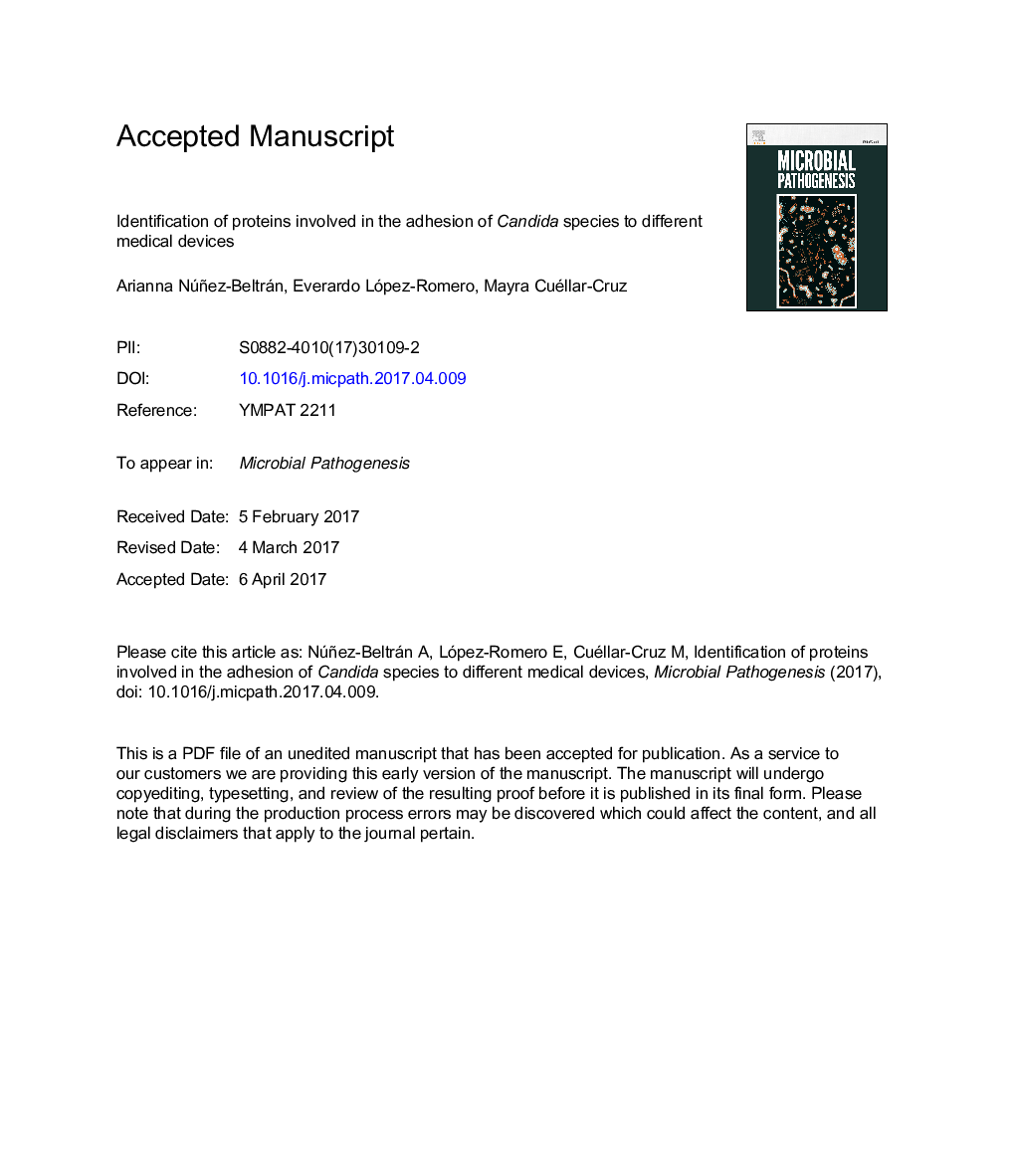| Article ID | Journal | Published Year | Pages | File Type |
|---|---|---|---|---|
| 5673946 | Microbial Pathogenesis | 2017 | 32 Pages |
Abstract
Adhesion is the first step for Candida species to form biofilms on medical devices implanted in the human host. Both the physicochemical nature of the biomaterial and cell wall proteins (CWP) of the pathogen play a determinant role in the process. While it is true that some CWP have been identified in vitro, little is known about the CWP of pathogenic species of Candida involved in adhesion. On this background, we considered it important to investigate the potential role of CWP of C. albicans, C. glabrata, C. krusei and C. parapsilosis in adhesion to different medical devices. Our results indicate that the four species strongly adher to polyvinyl chloride (PVC) devices, followed by polyurethane and finally by silicone. It was interesting to identify fructose-bisphosphate aldolase (Fba1) and enolase 1 (Eno1) as the CWP involved in adhesion of C. albicans, C. glabrata and C. krusei to PVC devices whereas phosphoglycerate kinase (Pgk) and Eno1 allow C. parapsilosis to adher to silicone-made implants. Results presented here suggest that these CWP participate in the initial event of adhesion and are probably followed by other proteins that covalently bind to the biomaterial thus providing conditions for biofilm formation and eventually the onset of infection.
Related Topics
Life Sciences
Immunology and Microbiology
Microbiology
Authors
Arianna Núñez-Beltrán, Everardo López-Romero, Mayra Cuéllar-Cruz,
